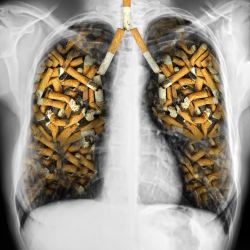The U.S. Centers for Disease Control and Prevention (CDC) is on a recent publishing push with respect to cancer prevention efforts, promotion of current statistics and encouragement of comprehensive plan implementations on all governmental, personal and public fronts.
Pediatrics’ — the official journal of the American Academy of Pediatrics — November issue included a companion supplement entitled “Opportunities for Cancer Prevention During Early Life.” The cover disclosed its sponsorship by the CDC, an Agency of the Department of Health and Human Services under the Cooperative Agreement CDC RFA OT13-1302: Building Capacity of the Public Health System to Improve Population Health through National, Nonprofit Organizations. The litany of topics covered runs the gamut from potential intervention targets in utero to adult survivors of childhood cancers and the universal inclusion of children in cancer prevention strategies and policy decisions, in general.
In the last week, the CDC issued the following press release: “Cancers linked to tobacco use make up 40% of all cancers diagnosed in the United States.” It identified tobacco use as the leading preventable cause of cancer and cancer deaths while underscoring its capacity to contribute to the development of numerous cancer types beyond the lung (e.g. mouth and throat, esophageal, stomach, kidney, liver, colon, pancreatic, cervical, acute myeloid leukemia, bladder, rectal— at least 12 types).
From 2009-2013, about 660,000 people were diagnosed with cancer related to tobacco use and about 343,000 died. Three in ten were attributed to cigarette smoking.
As per CDC Director Tom Frieden, M.D., M.P.H., “There are more than 36 million smokers in the U.S. Sadly, nearly half could die prematurely from tobacco-related illnesses, including 6 million from cancer, unless we implement programs that will help smokers quit.” The report discloses some progress, however, indicating since 1990 roughly 1.3 million tobacco-related cancer deaths have been avoided. They are ascribing this to comprehensive care and tobacco control programs, early cancer detection and treatment advances.
The CDC warns when states don’t make significant and long-term investments in these programs moving the needle on reducing smoker numbers and disease diagnosis or death will stagnate and enlarge the gap in health disparities.
It appears their recommendations convey a multi-prong approach which is actually somewhat refreshing since much recent policy tends to band-aid significant public health problems. On the personal responsibility and accountability front, they advise there are benefits to quitting at any age and certainly promote never starting. Encourage friends, family members and coworkers to quit while supporting making their homes and vehicles 100% tobacco free environments— in particular, in the presence of children. Empowering the public to understand what cancer screening tests for earlier detection are available as well as vaccines. Additionally, they direct those in need of quitting to seek help from their doctors as well as explore 1-800-QUIT-NOW or www.smokefree.gov for free assistance.
For physicians, the news isn’t particularly groundbreaking. Ask patients whether they use tobacco products, advise those who do to stop and those who don’t not to start. Did that seriously need to be included in writing? Doctors do learn these things in medical school, residency and actual practice. It kind of is why they became practitioners. Additionally, they implore on-time screening of patients and elucidating for patients what cancer screening tests are warranted.
The CDC’s guidelines for states include protection of nonsmokers from secondhand smoke in all indoor public spaces and worksites (also, restaurants, bars and casinos). Make tobacco cessation programs readily accessible for those desiring to quit and fund comprehensive tobacco prevention and control programs at CDC-recommended levels while focusing on prevention, education, overall good health, increasing care access and supporting cancer survivors.
On a federal level, the CDC urges funding for the states for these programs. Funding screening tests for cervical and colorectal cancer. Also, expanding nonsmoking spaces and promoting educational campaigns while regulating sales, marketing and manufacturing of tobacco products. In conclusion, they champion requiring insurance plans to cover in full these screenings, vaccinations, counseling and medications necessary for quitting.
A separate article— Current Cigarette Smoking Among Adults - United States, 2005-2015 — in the same Morbidity and Mortality Weekly Report (MMWR) employed the National Health Interview Survey (NHIS) which elucidates further the population differences. It declares the proportion of U.S. adults who smoke cigarettes declined from 20.9% in 2005 to 15.1% in 2015. However, it highlights the disparities that continue (to name a few): cigarette smoking prevalence higher in those with serious psychological distress (40.6%) than those without (14.0%), higher in adult males, younger, those with less education and living below federal poverty levels, those insured with Medicaid and uninsured, living in the Midwest or South, lesbian, gay or bisexual as well as American Indian/Alaska Native.
Though subject to some limitations in survey data acquisition, it conveys the importance of understanding the unique challenges of varying smoking populations. Only by identifying these disparities, can an effective comprehensive plan be conceived and orchestrated. Also, this article does expound upon the significant economic burdens of smoking-related disease.
With all the noise of politics and nonstop election media saturation, it is actually invigorating to read about raising public awareness on modifiable ways to prevent cancer. I welcome spreading that message.

